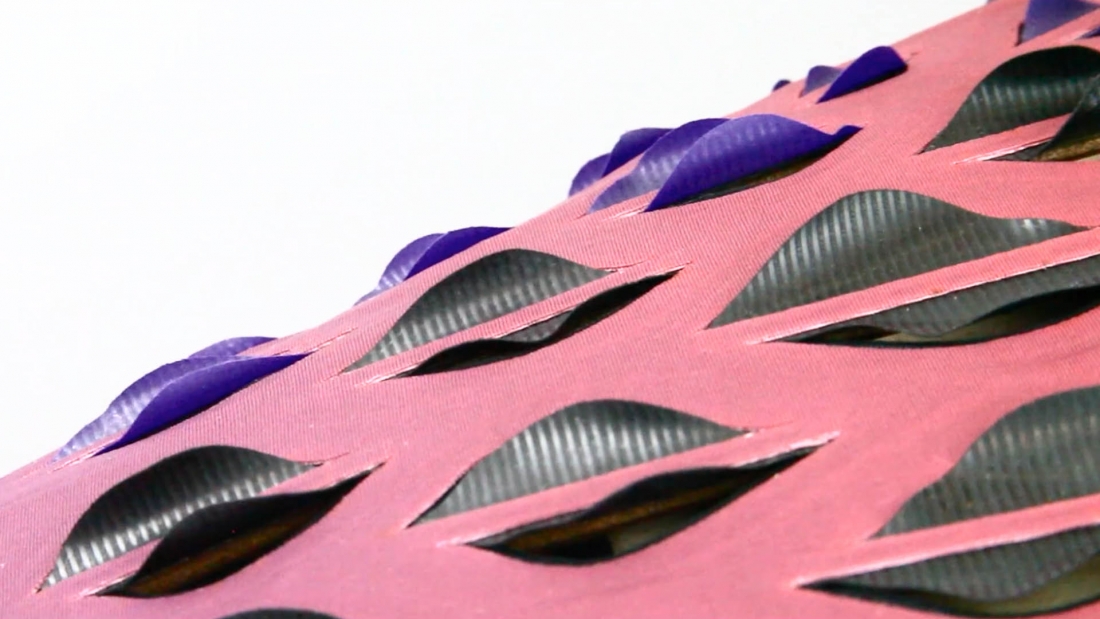
Last month we reported on a sports bra by Chromat that reacts to your body temperature by opening or closing vents. Chromat achieved this feat through sensors, actuators, and Intel’s Curie chip. Researchers at MIT Media Labs believe they can do one better though – completely eliminate the need for electronics to create venting garments.
The researchers have discovered that certain bacteria reacts to changes in humidity levels by contracting / expanding. This behavior allows the bacteria to behave as nanoactuators. The idea is simple but ingenious. MIT Media Labs grows the bacteria in a lab and then, using a 3D printer, applies it to vents cut into an article of clothing. When the person wearing the garment sweats, the ambient humidity in that area rises, and the bacteria reacts by opening vents around the sweat. Once the humidity level (sweat) decreases, the vents close. While MIT did discover that the bacteria will react to an electric current, no power is used to control the vents.
Creating a biohybrid garment that can react to your body without the use of any electronics is amazing. This type of fashion tech clearly represents a viable future of making our clothes smarter. Not only is it relatively inexpensive compared to creating scores of delicate electronic components but it also eliminates one of fashion tech’s biggest roadblocks: the need to plug it in to charge. While we don’t expect to find the tech in our next Lululemon shirt, we hope it makes it out of the lab. If we had to guess, finding a way to adapt the technology so that it can withstand the rigors of daily life and washings is not trivial. Head past the break to see the vents in action:
Continue reading






